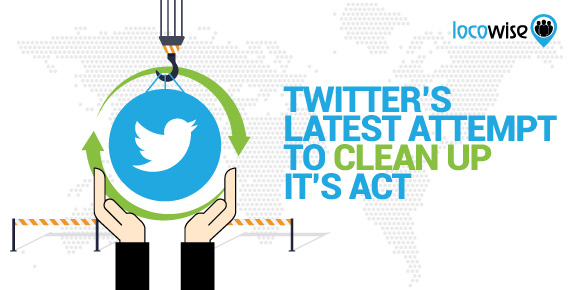Twitter’s Latest Attempt To Clean Up It’s Act
Sahail Ashraf posted on 14 August 2018
Twitter is a platform that is often in the bad books. It has been particularly vulnerable to bots in recent years, and setting up fake accounts is easy. Of course, these people (and bots) tend to get discovered by Twitter, but it still makes for a fairly unsafe environment for other users. In the past, Twitter has tried to make the whole platform safer and more useful, and now it’s trying something new.
If you think about the one true ‘credibility mark’ a user has on Twitter, it’s follower numbers. No matter how witty and clever an account is, if it has less than a few thousand followers it isn’t really relevant. Twitter knows this, but it has also pointed out the other side of the argument. If follower numbers are simply the result of bots and spam, then this means the user has an inauthentic presence. Twitter has just decided to take action when it sees some unusual follower behaviour on any account.

Meaningful and Accurate
Twitter wants meaningful and accurate accounts. This basically means that it wants accounts to serve audiences what they want to see. Of course, this cannot always be possible. Some accounts are so big, and get followed by so many people, that delivering targeted content every time you tweet is impossible. But Twitter qualifies that idea, by saying that it wants accounts to know who their followers are. If accounts recognise their followers, it leads to a better platform, where users are given the content that means something to them.
So essentially, this is an attempt to make Twitter a better place. The platform wants to make a healthy space to share news and connect with others. If people see that followers of an account they want to follow are bogus, they will conclude that the platform is untrustworthy. The same goes for a brand, for example, that wants to appear authentic online.
What Twitter is going to do is continue to lock accounts that have suspicious behavior happening. Then, they will remove those locked accounts from follower counts. This means that if you have followers that have been locked out, they’ll be taken from your follower count too.
Quality over quantity
This move by Twitter seems to echo the approaches taken by many other social media platforms. The most obvious example of a platform striving for authenticity is Facebook, which found itself in a lot of trouble (with Mark Zuckerberg actually having to attend hearings) because it got mixed up with a firm that mishandled user data. Trust started to plummet when this unfolded, and now Facebook is trying it’s best to bring people back into Facebook. It is doing this by stressing how secure the platform is.
Facebook is also making it very clear that it wants to treat everyone well. It is doing this by being completely open and transparent with user accounts, and reassuring users that their data is safe at all times.
This is what Twitter wants to do, and it fits neatly into the way brands should be using the platform. By knowing that your followers are real, you can then confidently create the kind of content that they want to see. This then has the intended impact and outcome. People see what they want to see and then they engage.
Just typing the phrase ‘authentic followers Instagram’ into Google brings depressing results. The search engine brings up ads that promise ‘authentic’ followers for $5. Another ad offers the opportunity to buy ‘real Instagram Followers’.
Anyone who has ever bought followers for any account will know that the followers,while often real people, are nothing like the audience you are trying to grow. Instead, they are accounts which often have low follower numbers themselves. In addition to that, the followers you pay for often unfollow within a few days, or at the very least offer little to no engagement. In other words, they’re the opposite of authentic.
The Customer Journey
All of this makes perfect sense for brands, who are using social media on a commercial level. If managed correctly, a good social media account for a brand will produce leads, people who click on links that bring them to an offering of value. This will not happen with followers that have been harvested from outside of your audience.
Jack Dorsey is the legendary founder of Twitter, and his own feed hints at the stress and frustration his brand was feeling up until the point where it started to take steps towards better levels of trust.
This tweet, from March 1st, tells you why Twitter is concerned about trust:
We have witnessed abuse, harassment, troll armies, manipulation through bots and human-coordination, misinformation campaigns, and increasingly divisive echo chambers. We aren’t proud of how people have taken advantage of our service, or our inability to address it fast enough.
(Jack Dorsey on Twitter)
The phrase ‘We aren’t proud…’ is telling. First Facebook, then Twitter. Social media is now actively targeting any accounts that threaten integrity.
The Way Forward
Brands are now in a unique position on Twitter. Any action taken by the social media channel against fake accounts and followers can only benefit a brand. If follower counts start to drop because of Twitter’s actions, that’s for the best. It means a brand will be able to look at it’s followers and create content for them. They’re going to be listening too, because they are authentic.
And that means more engagement and conversions.
Would you like to be able to see how much engagement your brand is getting on social? We offer all of that, and more, with reports and stats that are perfect for presentations to executives and clients. Try Locowise for a week, for free.




